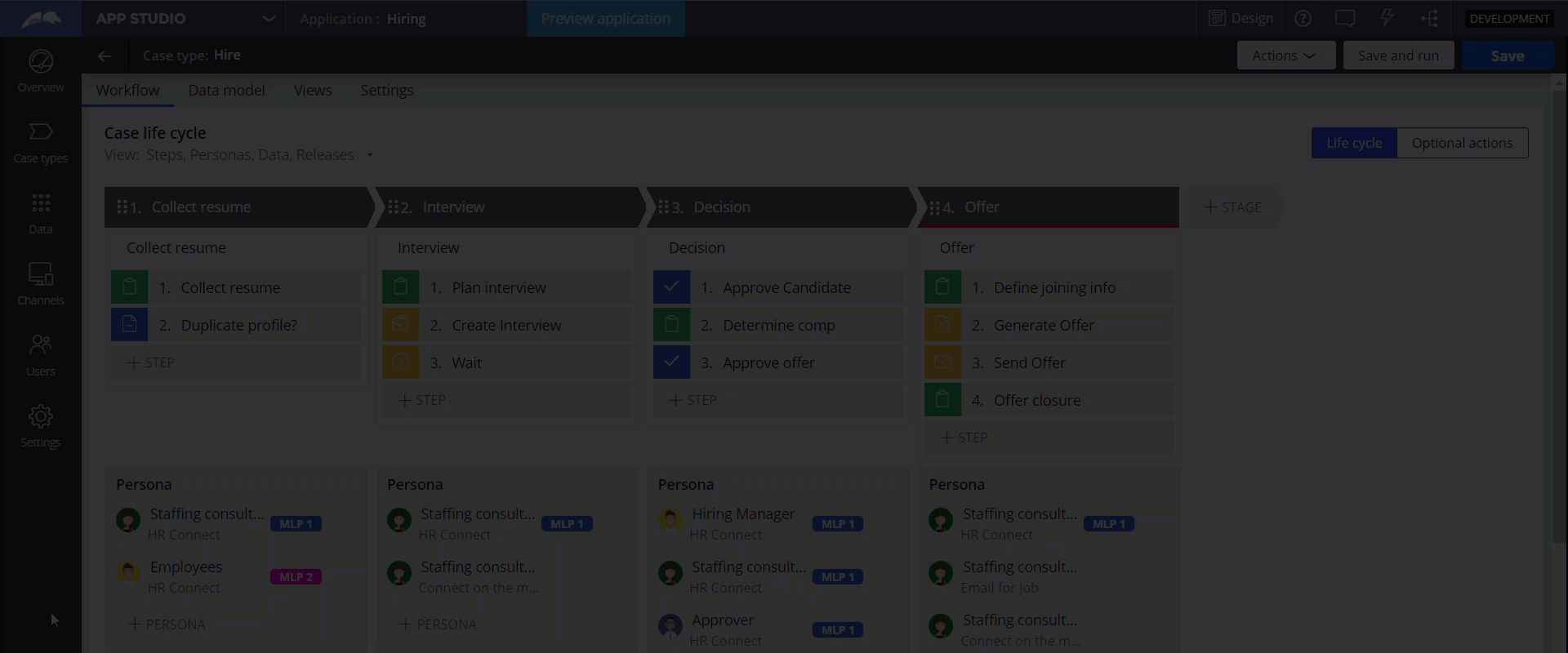Creating a Microjourney for customer success
Help your customers reach a successful resolution in their business processes by applying the Pega Express methodology while working on implementation projects through journeys and microjourneys. When you focus on one journey at a time, you not only improve how you address the specific needs of your customers, but also reach results more rapidly.
A journey and a Microjourney
- Case types that visualize the path of your business processes
- Personas that represent the people that are involved in your processes and the channels that they use to interact with a case
- Data that your processes require to reach a resolution
Efficient Microjourney planning
When you plan your Microjourney, you create draft relationships between cases, personas, and data objects. This planning phase helps your development team estimate the time and effort that they need to turn these drafts into permanent objects, so that you can build your application and deliver your projects faster. In addition, by visualizing all of the key aspects of your case within a single view, you improve how you understand and communicate the various aspects of development that your Microjourney involves.
For more detailed planning of your application development, you can specify the releases with which you plan to implement specific elements of your Microjourney. For example, in a hiring process, you can define a job candidate persona that in the first release of your application can only fill in a questionnaire that collects personal details. As you further enhance your application, you can indicate that in the second release the job candidate will also be able to upload scans of required documents.
The following figure presents creating a draft relationship between a case type and a persona:
Figure: Associating a persona with a case type

What to do next: Learn how to plan and implement your Microjourney through the following articles: